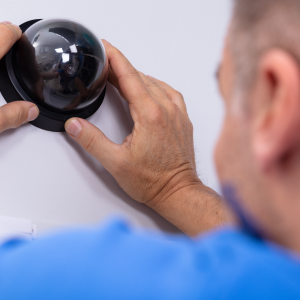- Licensing Training
- Earn CEUS
- Career Programs
- Certifications
- Security Certifications
- Certified Alarm Technician (CAT) Level 1
- Certified Video Systems Specialist (CVSS)
- Certified Video Technician (CVT)
- Certified Systems Integrator (CSI)
- Certified Alarm Technician (CAT) Level 2
- Certified Intrusion Technician (CIT) Level 2
- Certified Service Technician (CST)
- Certified Security Systems Integrator (CSSI)
- Fire Certifications
- Sales Certifications
- Renew Your Certification
- Security Certifications
- About
- Contact Us
- Alabama
- Alaska
- Arizona
- Arkansas
- California
- Colorado
- Connecticut
- Delaware
- Florida
- Georgia
- Hawaii
- Idaho
- Illinois
- Indiana
- Iowa
- Kansas
- Kentucky
- Louisiana
- Maine
- Maryland
- Massachusetts
- Michigan
- Minnesota
- Mississippi
- Missouri
- Montana
- Nebraska
- Nevada
- New Hampshire
- New Jersey
- New Mexico
- New York
- North Carolina
- North Dakota
- Ohio
- Oklahoma
- Oregon
- Pennsylvania
- Rhode Island
- South Carolina
- South Dakota
- Tennessee
- Texas
- Utah
- Vermont
- Virginia
- Washington
- West Virginia
- Wisconsin
- Wyoming
- Licensing Training
- Earn CEUS
- Career Programs
- Certifications
- Security Certifications
- Certified Alarm Technician (CAT) Level 1
- Certified Video Systems Specialist (CVSS)
- Certified Video Technician (CVT)
- Certified Systems Integrator (CSI)
- Certified Alarm Technician (CAT) Level 2
- Certified Intrusion Technician (CIT) Level 2
- Certified Service Technician (CST)
- Certified Security Systems Integrator (CSSI)
- Fire Certifications
- Sales Certifications
- Renew Your Certification
- Security Certifications
- About
- Contact Us
- Core Courses
- Printed Course Material Add-Ons
- Assessments
- Class Templates
- Group Products
- Uncategorized
- Continuing Education Courses
- ESA Fire Certifications
- ESA Security Certifications
- Certified Alarm Technician - Level I
- Certified Alarm Technician (CAT) Level II
- Certified Intrusion Technician (CIT) Level II
- Certified Security Systems Integrator (CSSI)
- Certified Service Technician (CST)
- Certified Systems Integrator (CSI)
- Certified Video Systems Specialist (CVSS)
- Certified Video Technician (CVT)
- ESA Sales Certifications
- States
- Alabama
- Alaska
- Arizona
- Arkansas
- California
- Colorado
- Connecticut
- Delaware
- Florida
- Georgia - Cobb County
- Hawaii
- Idaho
- Illinois
- Indiana
- Iowa
- Kansas - City of Wichita/Sedgwick County
- Kentucky - Louisville
- Louisiana
- Maine
- Maryland
- Massachusetts
- Michigan
- Minnesota
- Mississippi
- Missouri - St. Louis County
- Montana
- Nebraska
- Nevada
- New Hampshire
- New Jersey
- New Mexico
- New York
- North Carolina
- North Dakota
- Ohio
- Oklahoma
- Oregon
- Pennsylvania
- Rhode Island
- South Carolina
- South Dakota
- Tennessee
- Texas
- Utah
- Vermont
- Virginia
- West Virginia
- Wisconsin
- Wyoming
- Washington
- Course Format
Troubleshooting Service and Maintenance Series (6-Hour CEU Bundle)
$168.00

This course provides students an overview of troubleshooting, maintenance and inspection techniques for the following: panels and power supplies, intrusion alarm devices, fire alarm devices, closed-circuit video systems, communication, and notification devices.
It is important to remember that maintenance, inspections, and testing all have uniquely different legal definitions. Regular testing and inspection of fire alarm system equipment, systems, and fire safety control functions are required by Code for both new and existing systems.
Upon Course Completion, Students Will Be Able To:
- Explain the most common problems and how frequently they occur.
- Identify specific corrective actions to take based on the state of the output at the monitor.
- Describe a simple problem resolution procedure.
- Describe a ground loop, testing procedures, and ground loop isolation transformers.
- Explain how to test for proper termination.
- Identify current and past communication methods.
- Describe digital communications equipment.
- Explain common DACT problems, tests and solutions.
- Describe cellular communication problems, tests and solutions.
- Explain network communication, problems, tests and solutions.
- Explain the components of a fire life safety alarm system and how they interrelate.
- Describe how to troubleshoot fire panels, NAC, power supplies and other components of a system.
- Identify how to troubleshoot powered and non-powered devices typical to a fire/life safety alarm system.
- Identify common troubleshooting issues for intrusion panels
- Define troubleshooting symptoms, problems, and solutions for all 3 methods of connecting devices to the panel
- Identify troubleshooting methods for burglar system components.
- Explain troubleshooting symptoms, problems, and solutions for both powered and non-powered devices.
- Read and interpret manufacturer’s specifications (voltage, permissible load, etc.).
- Determine the minimum size power supply needed.
- Calculate the size battery needed for a system to operate for specified number of hours (4, 24, 60, and 72) without primary power.
- Calculate the size battery needed for a system to operate without primary power as required by NFPA and UL requirements. And after determining the proper battery, list reasons for its failure for a given system.
- Select the proper transformer for power supply as well as install and wire the transformer.
- Describe the difference between the terms, maintenance, service and inspection.
- Explain the NFPA code requirements for testing methods, and frequencies.
- Identify check lists designed to aid testing and inspections.
- Describe manufacturer specific functional testing of specific.
What to expect in this course: The presentation includes text, audio, graphics, videos and activities to help you absorb the information presented. This course has a short quiz at the end, which you will be required to pass with a 70% or greater to complete the course.
State Approvals/Recognition
State approvals include:
AK-CBPL, Sponsor No 16207
AL-Alabama Electronic Security Board of Licensure (AESBL)
CA-Approved through WBFAA. Must submit through WBFAA, conversion fees apply.
LA-Louisiana Office of the State Fire Marshal: Life Safety & Property Protection Advisory Board (LSPPA)
Louisville, KY-Louisville Metro Police Department (LMPD)
MS-Mississippi Office of the State Fire Marshal: Electronic Protection Systems Division
NC-North Carolina Department of Public Safety: Alarm Systems Licensing Board (NC DPS-ASLB)
NJ-State of New Jersey: Division of Consumer Affairs
TX-Texas Department of Public Safety: Private Security Bureau (TX DPS-PSB)
TN-Tennessee Department of Commerce and Insurance: Alarm Systems Contractors Board
WA-State Department of Labor & Industries – Electrical Board
Online Courses:
If the student has completed less than ¼ of the course and a request is made to cancel, a refund is available less a 25% administrative fee. Students may choose to transfer their funds to another ESA/NTS provided course if less than ¼ the course has been completed. Transfers will not be issued until the class materials, including the course manual, is returned in like new condition to ESA/NTS. Fund transfers cannot be made to non-ESA/NTS courses due to the varied payment terms established by the Training Providers. Cancellation requests made beyond one-quarter through the course will not be refunded or transferred. Refunds should be expected within thirty days of receipt of returned materials.Live In-Person and Virtual Courses
Provider Cancellation Policy: Training Providers may cancel a class with at least 5 calendar days’ notice to pre-registered students. Classes may be cancelled without advance notice due to weather conditions or other unforeseeable emergencies. The Training Coordinator determines the conditions that constitute an emergency. All monies paid to the Training Provider for a class that is cancelled shall be fully refunded within 14 business days of the cancellation notice. Students may choose to have their monies credited towards another scheduled class. Students should contact the Training Provider for additional terms and conditions regarding their refund policy. Student Cancellation Policy: If a student cancels an ESA National Training School course more than seven days prior to the class, a refund, less a 25% administrative fee, will be issued. In lieu of canceling, a student can opt to transfer their funds to a future course. There are no refunds or transfers permitted within seven days before the class.$35.00

$35.00





